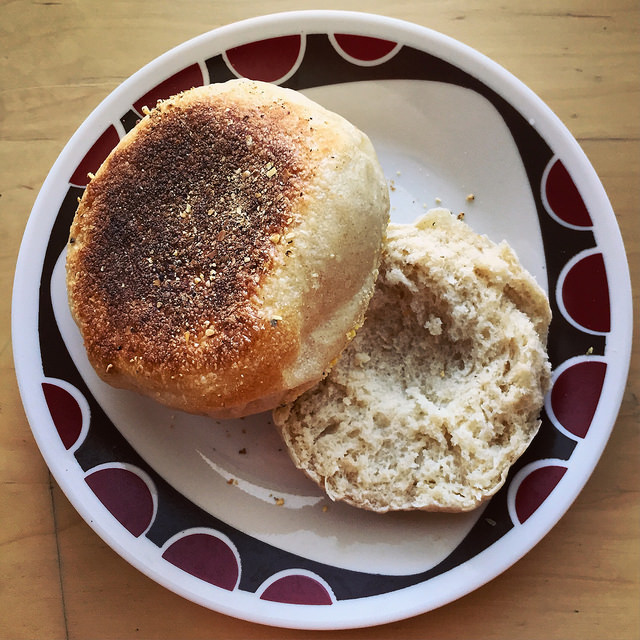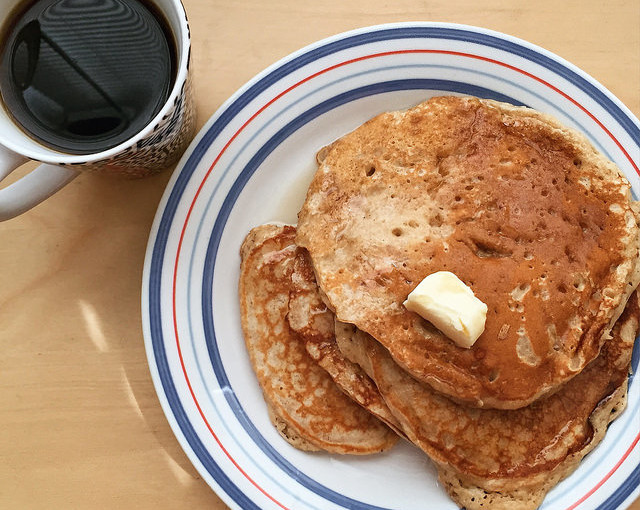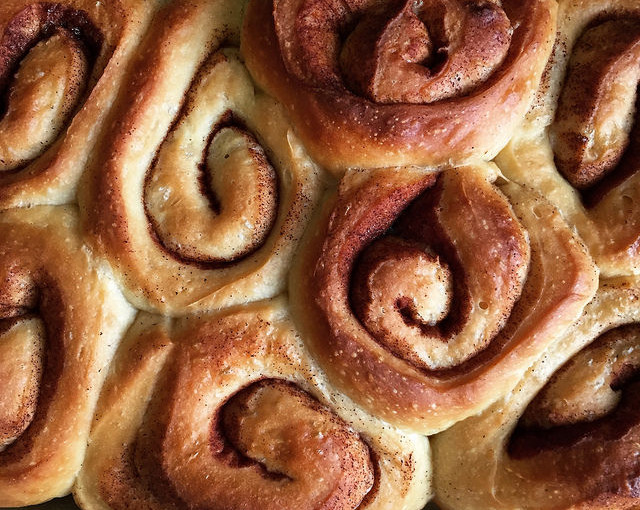There are a few foods for which the store-bought options are perfectly adequate. Yogurt isn’t significantly better when made at home. A slice of good whole wheat bread from a bag at the store makes a perfectly nice piece of toast. No one expects a homemade hot dog on the Fourth of July. You might think that English muffins, the canvas upon which many a great breakfast dishes are built (read: Eggs Benedict, Egg McMuffins), fall into that category. After all, even top-tier restaurants often serve up the standard Thomas-brand muffins for breakfast and brunch. But don’t let yourself be lulled into mediocrity by those nooks and crannies. You are missing out on something magical.
Because once you’ve had a homemade English muffin, still warm and steamy from the oven, you’ll know that you’ve only known lackluster breakfast carbs before now. Fresh English muffins are transcendental. Life-altering. Well, breakfast-altering, anyway.
Well, breakfast-altering, anyway.

English muffins are unique in that they’re cooked in a pan, almost like an incredibly fat and doughy pancake. This recipe calls for finishing them in the oven, however, to ensure that they’re fully baked through the center without getting burnt on the outside. They go from nicely browned to sadly burned very quickly, so it’s important not to walk away when they’re in the pan.
These English muffins are light and porous inside, with a nice chewy crust outside. I’ve added a bit of whole wheat flour to give them a bit more complexity of flavor, but I’d love to try packing them full with even more grains — maybe a touch of amaranth and quinoa? They’re a great base for eggs of all sorts in the morning, but I also love them toasted with a slather of peanut butter– or with a few slices of avocado topped with lemon juice and salt. But beware– once you try these, you’ll have a hard time going back to store-bought.
The Very Best, Fresh English Muffins
Yields 6 muffins. Very slightly adapted from Peter Reinhart’s The Bread Baker’s Apprentice.
Ingredients
- 2 cups bread flour
- 1/4 cup whole wheat flour
- 1/2 tablespoon sugar
- 3/4 tsp salt
- 1 1/4 tsp instant yeast
- 1 tablespoon unsalted butter, room temp
- 1 cup milk or buttermilk
- Cornmeal for dusting (at least 1/4 cup)
Procedures
- Stir together all dry ingredients (excluding the cornmeal) in a mixing bowl. Add in butter and 3/4 cup of the milk and stir until the ingredients form a loose ball. Add the remaining milk if the dough is too dry (it probably will be). It should be soft and pliable.
- Turn dough out onto a counter and knead for about 10 minutes. The dough will be very elastic and tacky, but not sticky. Form into a ball and transfer it to a lightly oiled bowl, rolling it around to coat with oil. Cover with plastic wrap.
- Let rise for 60-90 minutes, or until dough doubles.
- Line a baking sheet with parchment paper and dust with cornmeal. Turn dough onto a cutting board or counter and divide into 6 equal pieces (each one will be about 3 ounces). Shape each into a boule (smooth ball), and place a few inches apart on the parchment. Spray with cooking oil and dust with more cornmeal.

- Cover pan loosely with plastic wrap and set aside to proof for another 60-90 minutes.
- Preheat the oven to 350°F. Heat a pan on the stove over medium heat.
- Mist the pan with spray oil, and use a spatula to lift the balls into the pan one at a time, being careful not to disturb them too much as you do. (I fit 3 into my pan at a time) Let cook for 5-6 minutes, touching them as little as possible while they’re cooking. They’ll both puff and spread slightly.

- When the bottoms are a deep golden brown, flip the muffins over and cook for another 5-6 minutes on the other side. They should take on that signature hockey-puck shape after you flip them. When the second side is also deep golden brown, transfer muffins to a baking sheet and stick in the oven. Start the second batch of muffins while the first are in the oven.
- Bake for 5-8 minutes to ensure that muffins are cooked through. (Make sure not to wait for the second batch– they need to be baked immediately after coming out of the pan). Remove and cool on a rack for at least 30 minutes, or as long as you can wait before tearing into one.
Note: To get that craggy texture described as “nooks” by commercial English muffin brands, use a fork instead of a knife to slice these before eating; simply push the tines of the fork straight in from the side, continuing around the perimeter of the muffin, then pull apart.









 For a lot of Americans (especially those who make frequent trips through an airport or mall), Cinnabon is the apex of cinnamon roll-goodness. But frankly they tend to be cloyingly sweet, huge, and not consistently fresh. This recipe from The Bread Baker’s Apprentice yields cinnmon buns that are fluffy and balanced, not overly sweet or buttery, and just the right size for breakfast.
For a lot of Americans (especially those who make frequent trips through an airport or mall), Cinnabon is the apex of cinnamon roll-goodness. But frankly they tend to be cloyingly sweet, huge, and not consistently fresh. This recipe from The Bread Baker’s Apprentice yields cinnmon buns that are fluffy and balanced, not overly sweet or buttery, and just the right size for breakfast.
